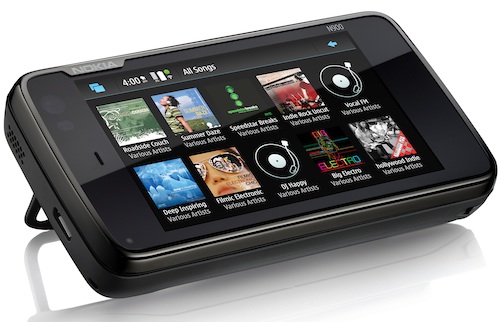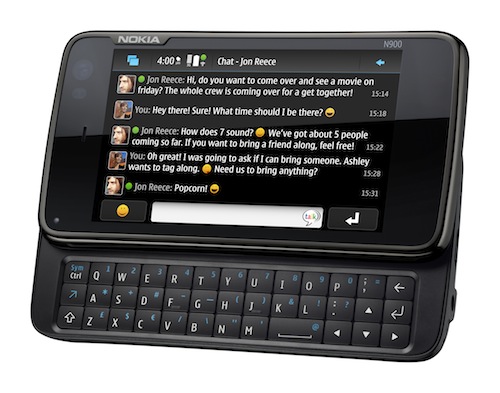Nokia isn’t launching the N900, its first Linux phone, in SA. Which is a pity, because I think this device could find a ready market among the tech set. [Update: Nokia has decided to introduce the product in SA after all. It will go on sale in the second quarter of 2010.]
The N900 represents Nokia’s latest attempt to claw back lost ground in the smartphone market. It is fighting a rearguard action against Apple’s iPhone and a range of new devices based on Google’s new Android operating system.
The device, the successor to the N810, doesn’t run Nokia’s preferred smartphone operating system, Symbian. Rather, it ships with Maemo, which is based on Debian Linux.
I’m not even sure I should be calling the N900 a smartphone at all. It’s more like a powerful pocket computer with cellphone functionality tacked onto it. You can even open up a Linux command-line and start hacking around in the guts of the software. It’s pretty neat if you’re a geek, and pretty intimidating if you’re not.
I like fiddling with computers and if you’re like me, you’ll like this phone because it really lets you fiddle. You can even get easy root access to the underlying operating system — dangerous if you don’t know what you’re doing but serious fun if you know your way around a Unix command-line.
So, what’s in the package? Stand by, because there’s plenty packed under the hood — which, at a fairly hefty 181g, there’d better be.
First of all, the N900 has a 3,5-inch touch-sensitive widescreen display with a resolution of 800×480 pixels. It also has a stylus because — and this is a negative — it’s difficult to drive the on-screen menus using your fingers. Apparently the version of Maemo on the N900 has significant enhancements that make controlling the phone with your fingers easier, but it still needs work.
Then there’s the powerful, 600MHz ARM Cortex-A8 processor and, believe it or not, a PowerVR SGX graphics accelerator with support for OpenGL. If that sounds like gobbledygook, it just means this device is designed to crunch through complex graphics. It doesn’t seem quite as fast as the iPhone 3GS’s graphics, but the game performance is nevertheless impressive.
There’s also no shortage of memory, with 32GB integrated and the option to plug in a further 16GB using the microSD card slot. The usual stuff, like assisted GPS, FM tuner, Bluetooth, micro USB port and 3,5mm audio jack, are all included.
The screen slides back to reveal a well-designed Qwerty keyboard that’s big enough for even big-fingered people to use with comfort. The only problem with adding a keyboard to the device is that the N900 is quite a bit thicker than it would otherwise have been. It’s nearly twice as thick as an iPhone, so doesn’t slide easily into your pants pocket.
Connectivity is delivered via quad-band GSM/Edge and, unusually for a smartphone, tri-band 3G (900MHz, 1,7GHz and 2,1GHz) with 10,2Mbit/s high-speed packet access.
The integrated camera can take photos at up to 5-megapixels. The quality of the photos is extraordinarily good for a camera-phone. The N900 shoots pretty good quality videos, too.
The most impressive aspect of the N900 is the software. Though it’s not as slick and refined as the iPhone’s interface, and it takes a bit of getting used to, the Nokia device is fun to play with, especially if you fall into the “power user” category.
The big downside, though, and it’s a problem which afflicts Symbian-based devices, too, is the lack of applications available for the Maemo platform.
This shouldn’t be a problem for too long, though — because Maemo is built on Linux, it’s not hard to port applications to the platform. Already, some enterprising soul has ported the classic Linux game, The Battle for Wesnoth, to Maemo. You can even install open-source word processor Abiword and spreadsheet application Gnumeric.
As a smartphone for the ordinary Joe, though, the N900 is not recommended, which is probably why SA operators aren’t going to be stocking it. If you want one, you’re going to have to order it from overseas (from €500) or make friends with someone at the local Nokia office. — Duncan McLeod, TechCentral



